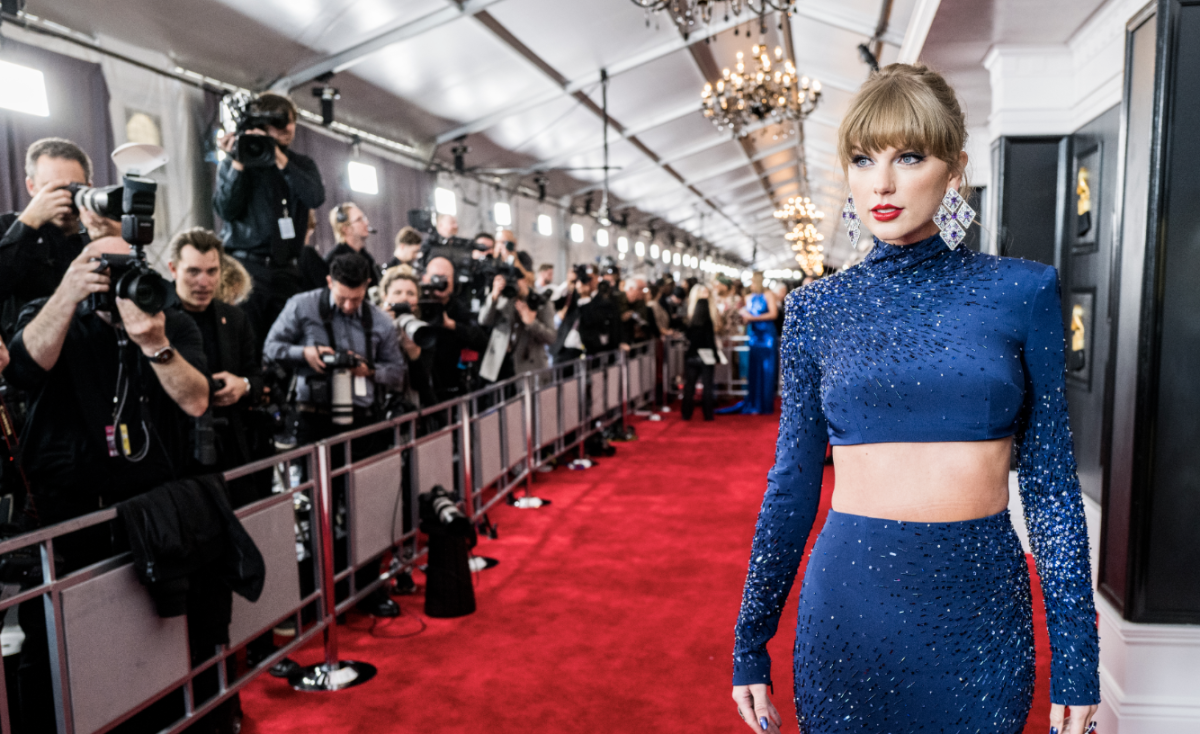Taylor Swift’s cultural impact is undeniable. As a journalist, covering her life and career is more than a job — it’s an entire beat.
“She turns heartbroken emotions into a kind of community,” longtime Swift chronicler Rob Sheffield told Yahoo Entertainment, pointing to the singer’s “Eras Tour,” which, after nearly two years on the road, wraps up the U.S. leg on Nov. 3 in Indianapolis before its final bow on Dec. 8 in Vancouver, B.C.
“You’re singing the loneliest song you’ve ever heard in your life and realize you’re singing it with 60,000 other people,” he said. “It’s unlike anything else in pop music.”
Sarah Chapelle, who’s documented Swift’s fashion evolution since 2011 with her blog Taylor Swift Style, described Swift as “one of the most savvy and intentional pop stars of the modern age,” whose artistry reaches far beyond music.
“Her music and fashion are like two halves of a locket,” she explained to Yahoo Entertainment. “They work together. Her songs reflect her feelings, and her outfits iconify all those memories and moments.”
Last year, USA Today’s Bryan West became the first full-time Swift reporter at the outlet, traveling the globe to cover the “Eras Tour” and meeting Swifties at every stop. Along the way, it became clear to him that Swift’s reach is both vast and deeply personal.
“Every single place, stadium or arena I’ve gone to, the fans speak the same language,” he told Yahoo Entertainment. “No matter the continent, her fans almost always have a personal story of how she’s touched them through a dark time.”
Together, these journalists have witnessed firsthand the evolution of Swift’s music and style into a phenomenon unmatched in pop music. But what is it really like to cover the world’s biggest star? Here’s what they had to say.
The fashion archivist: Sarah Chapelle
Before launching her blog, Chapelle was already captivated by Swift’s everyday style. She saw something uniquely artistic in how Swift’s day-to-day looks reflected the music she was creating, allowing fans to not only emulate her but also, in a way, step inside her art.
“I guess you could call it a niche within a niche of the fandom,” Chapelle said. Originally intended as an archive of Swift’s fashion, her blog evolved to offer fans richer context, noting, for instance, when Swift wore a brand for the first time or brought back an accessory only devoted Swifties would recognize.
For Chapelle, it became a full-time job. “I would subscribe to fashion magazines,” she said. “I’d look at every single fashion runway to familiarize myself so I could start to identify a brand by the cut of a shirt or pattern.”
The release of 1989 in October 2014, considered by many as Swift’s first official pop album, marked a major shift in Swift’s public persona and a turning point for Chapelle’s blog. As Swift expanded the volume and variety of her wardrobe, Chapelle saw her fashion as a curated extension of her identity, with each outfit telling a visual story that complemented the themes in her music.
Chapelle’s book, Taylor Swift Style: Fashion Through the Eras, which dropped on Oct. 8, chronicles this evolution, capturing not just what Swift wore but also the singer’s journey of self-discovery — from her country roots to her bold, edgy Reputation era.
Despite Swift’s evolution, Chapelle noted that she remains true to herself. “There’s an innate DNA to Taylor’s style,” she explains. “When people read the book, you can see that.”
The cultural historian: Rob Sheffield
Sheffield was there at the beginning, captivated in 2007 when he first heard Swift’s single “Our Song.” To him, the track was both her “manifesto and a mission statement,” hinting at the seismic shifts she would bring to music over the next two decades.
“There’s a long tradition of young female pop stars singing songs that men have written for them,” Sheffield explained, arguing that Swift “forced the music industry to reckon with the young female fan as the pilot of the entire pop music starship.”
He continued, “For Taylor Swift to be writing songs about her own life and presenting them in a ‘these are my feelings, but these are also your feelings’ kind of way, completely transformed pop music.”
Sheffield’s take on Swift is on full display in his forthcoming book, Heartbreak Is the National Anthem, out Nov. 12, in which he examines how she continues to defy expectations around women’s leadership in music.
One example of her defiance came in 2019, when talent manager Scooter Braun purchased, and in 2020, sold Swift’s music catalog. In an effort to reclaim her early work, Swift, who changed labels in 2018, released “Taylor’s Version” recordings of Fearless and Red in 2021, followed by Speak Now and 1989 in 2023.
Swifties embraced the re-recordings with unwavering loyalty — a testament, Sheffield said, to Swift’s commitment to embedding her life within her art.
“She wanted her story to be hers,” he said, “and she’s done that with these albums.”
The tour reporter: Bryan West
When West became the first full-time Taylor Swift reporter for USA Today and the Tennessean, a newspaper within the Gannett chain, he saw it as an opportunity to reshape entertainment reporting. With over 450 articles written since taking the role, he’s covered everything from the economic impact of the “Eras Tour” to Swift’s romance with NFL star Travis Kelce and even her endorsement of Vice President Kamala Harris for president.
“I have never followed football, and because of her romance with Travis, I now understand football. I get it,” West joked, highlighting how Swift’s influence has led him to unexpected avenues.
“I never thought, for example, that I’d cover Southeast Asia geopolitics,” he muses, recalling how Singapore secured exclusivity for Swift’s “Eras Tour” in the region. In response, the Philippines announced plans to build a new stadium by 2028 to court Swift.
Swift’s endorsement of Harris for president also caught him off guard. “I had gone to a Meghan Trainor concert and was driving back when the news broke,” he recalled. “I had to pull over and file [a story] from a gas station parking lot.”
Swift’s ability to make unpredictable moves is something West has come to expect. Describing her influence as “monumental and global,” he believes her story is still unfolding.
“Her legacy is still being written,” West said. “We still have eras left to unearth. We still have history that I think we’re going to see her make.”
EMEA Tribune is not involved in this news article, it is taken from our partners and or from the News Agencies. Copyright and Credit go to the News Agencies, email news@emeatribune.com Follow our WhatsApp verified Channel




